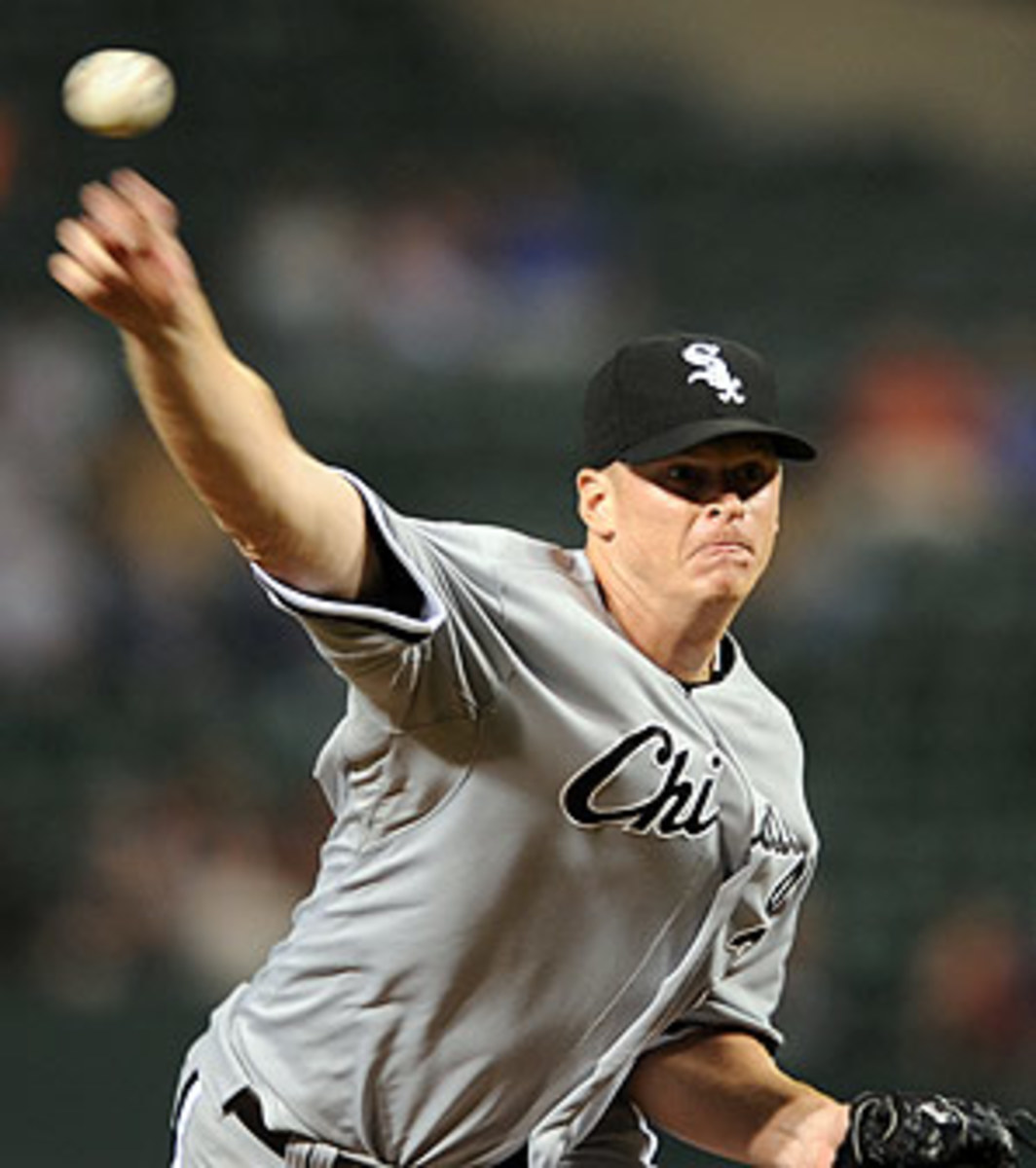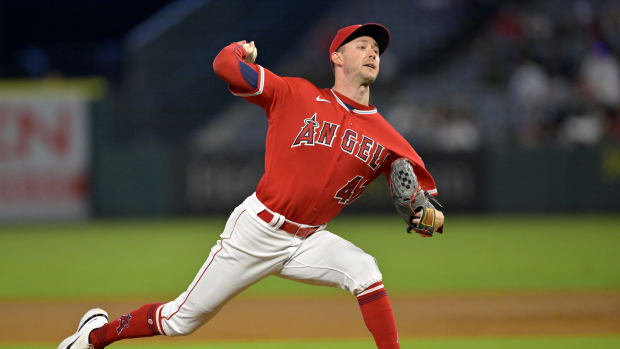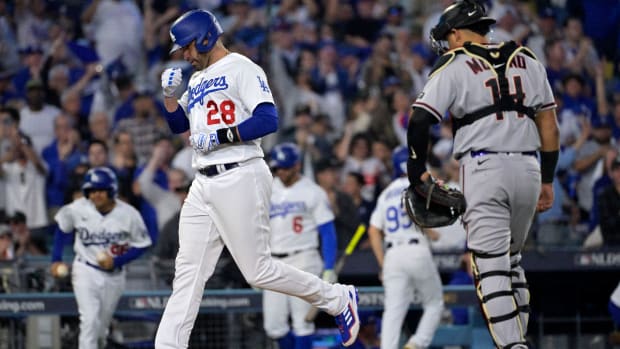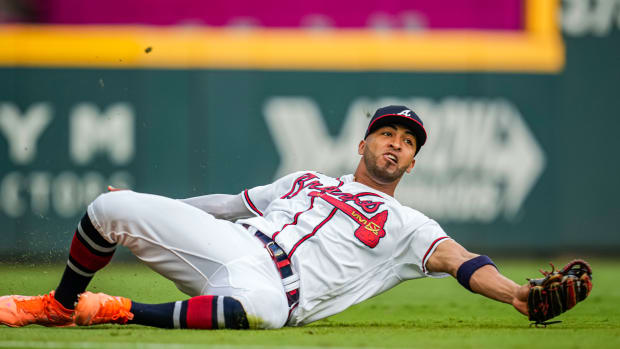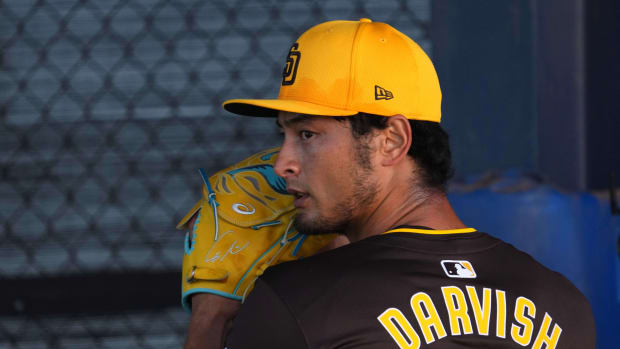Scouting Report: Gavin Floyd
This is the latest in a series of scouting reports provided to SI.com by the network of former players, coaches, scouts and executives and the Baseline Group.
Current: Good
Projected: Good
Categorization Scale:
• Elite: top one or two pitchers in the game (Roy Halladay)
• Premium: top ten pitcher (Dan Haren)
• Good: top of the rotation guy; occasional All-Star (Daisuke Matsuzaka)
• Average: back of the rotation guy (Oliver Perez)
• Key role: occasional starter (Julian Tavarez)
Considering he was given up on by Philadelphia (traded along with Gio Gonzalez for Freddy Garcia in December of 2006), and considering he had a 5.27 ERA and 1.486 WHIP for the White Sox last year, Gavin Floyd has been a very pleasant surprise in 2008. His 16 wins in 31 starts is tops for the first-place White Sox, and his 3.84 ERA (good for a 119 ERA+) is second on the starting staff.
Floyd has an aggressive style, with four plus pitches (fastball, curve, slider and change-up) and the ability to use each at any time. Walks plagued him during his first four seasons, but he's allowed just 14 in his last 11 starts.
• Four above average pitches
• Ability to be a front line starter
• Effectively pitches inside to right-handed hitters
• Below average command
• Prone to walking too many; pitches away from contact
• Below average in controlling the running game; slow to the plate
• Movement: His fastball has sinking action and tail to his arm side, and he is using a four-seam and small cutter to his glove side. He relies mostly on his two-seam fastball.
• Command: Floyd has below average command overall. He gets in trouble by pitching away from contact at times. His best command is to his armside. He is able to pitch inside off the plate to right-handed hitters with his two-seam fastball. He will move lefties off the plate with his cutter.
• Plan: He looks to establish his two-seamer early in the game to both left and right-handed hitters, especially to the inner half of the plate to righties. He will use his cut-fastball off the plate more than on the plate.
• Movement: Floyd's slider has small, late break with little depth. He will cut down the break when going to the back door side of the plate and when he throws it in on the lefties hands.
• Command: He has below average command of his slider. He is inconsistent with his ability to locate it because he comes around it at times.
• Plan: He will use his slider to both left and right-handed hitters, typically early in the count. He likes to use it to the righties with runners on base and lefties to get them looking on the inner half, hoping to open the outside part of the plate.
• Movement: Floyd's change-up has sinking action that is effective because it has the same action as his fastball and he shows good arm speed with it.
• Command: His change-up command is below average. He isn't able to keep his change-up in the zone enough to get hitters to swing at it. When he is able to keep it in the zone it is an effective pitch for him.
• Plan: He'll use it to both right and left-handed hitters but throws it more to the lefties, especially when he is behind in the count. He doesn't use it much the first time through the line-up, saving it for later in the game.
• Movement: His curve has 11-5 break with good rotation when he gets it out in front.
• Command: Floyd has average command with his curve. He has the ability to throw it to both sides of the plate. He will at times come around it and leave it in the middle of the zone.
• Plan: He will use it to both sides of the plate and likes to back door it to the left-handed hitters. When he throws it to the back door it is thrown harder, and he shortens the break and will increase the break to righties.
In crucial situation with a runner on second base, Floyd will be very tough on a right-hander who is a below average breaking ball hitter and/or who will chase the ball out of the strike zone. That's because commands both breaking pitches in and out of the zone, and that means he's capable of changing the angle and depth of breaking balls that move away from righties.
Floyd will have a tough time against a left-handed hitter who is capable of using the entire field -- especially a hitter with plate discipline. That's because he'll have Floyd's best outpitches coming to him instead of moving away from him.
Likes to start hitters off with his fastball the first time through the line-up.
Floyd is an average fielder but could do a better job of getting off the mound when fielding bunts. He is below average when it comes to handling the running game. He is slow to the plate and is easily timed.






























